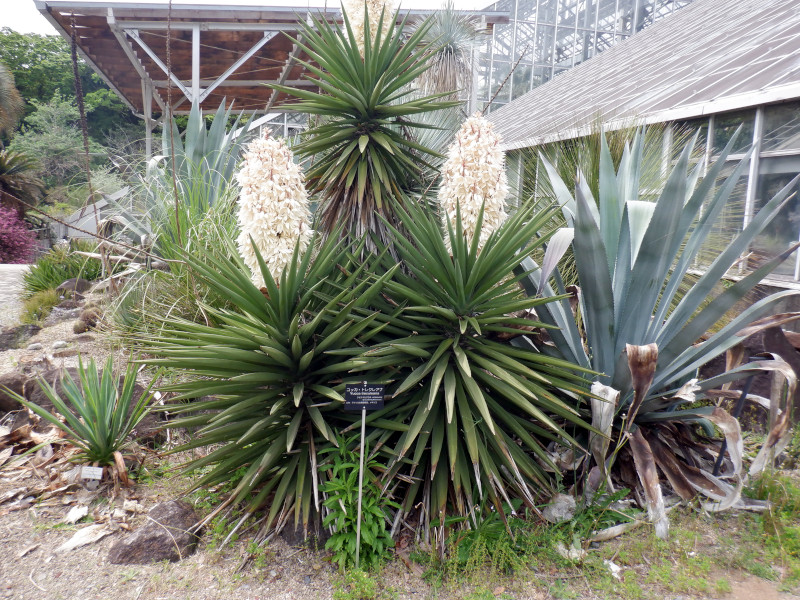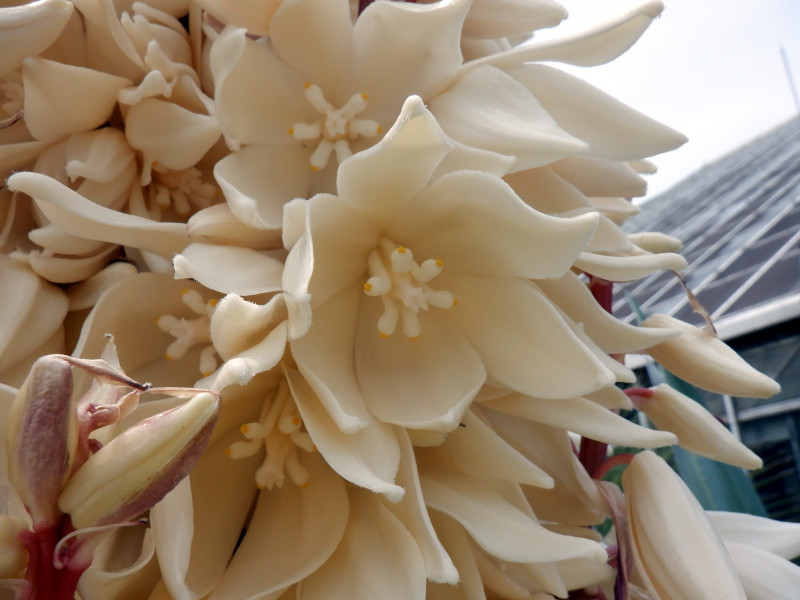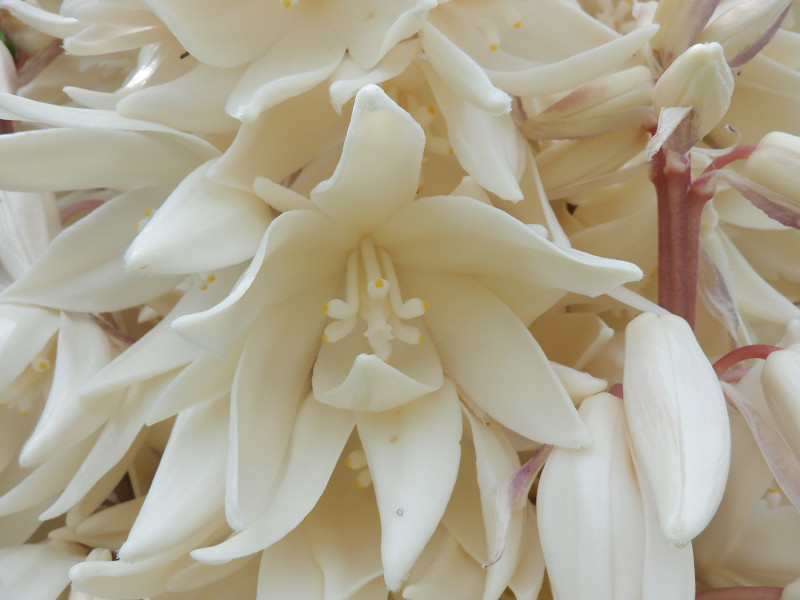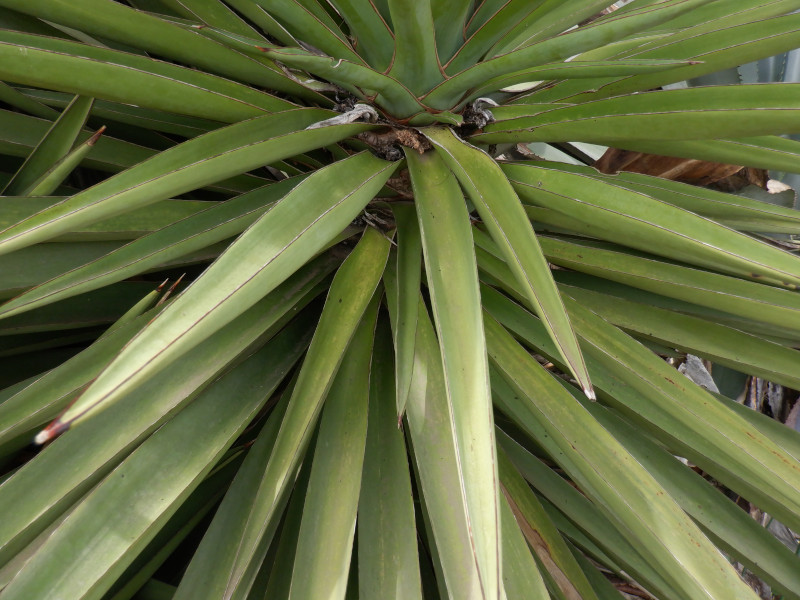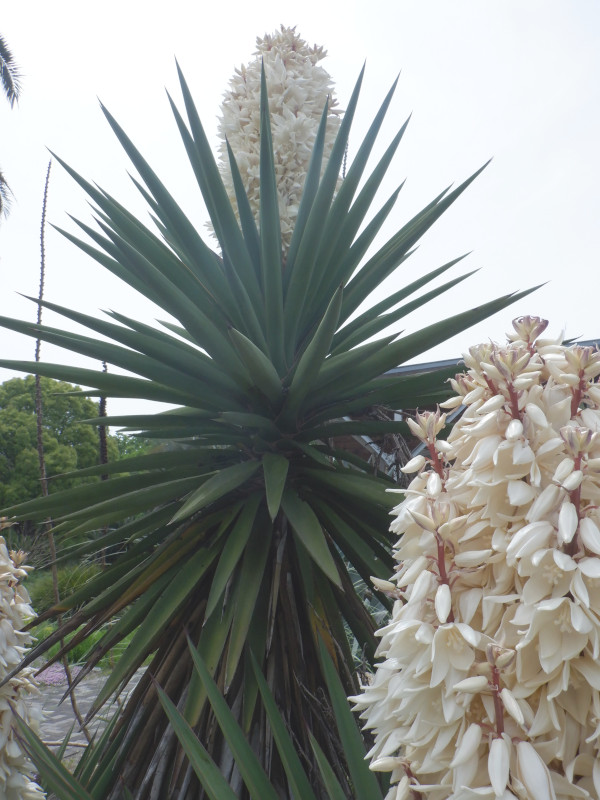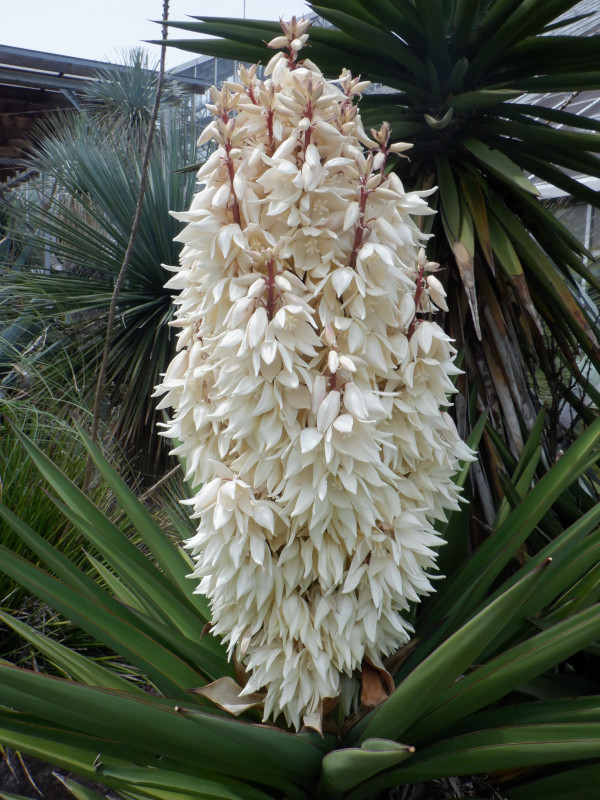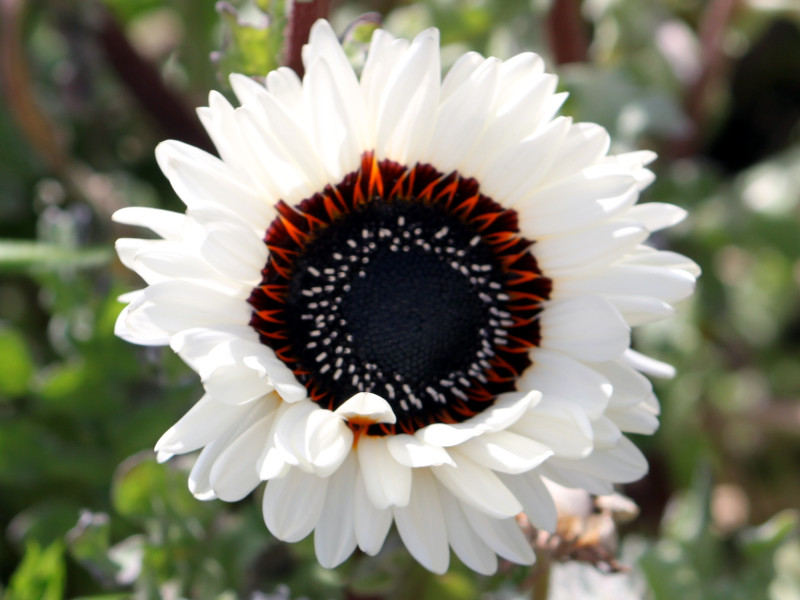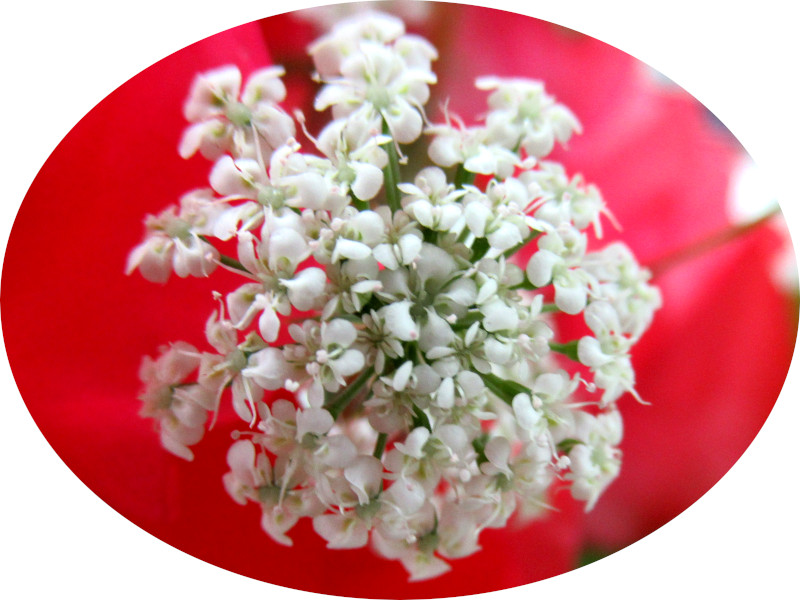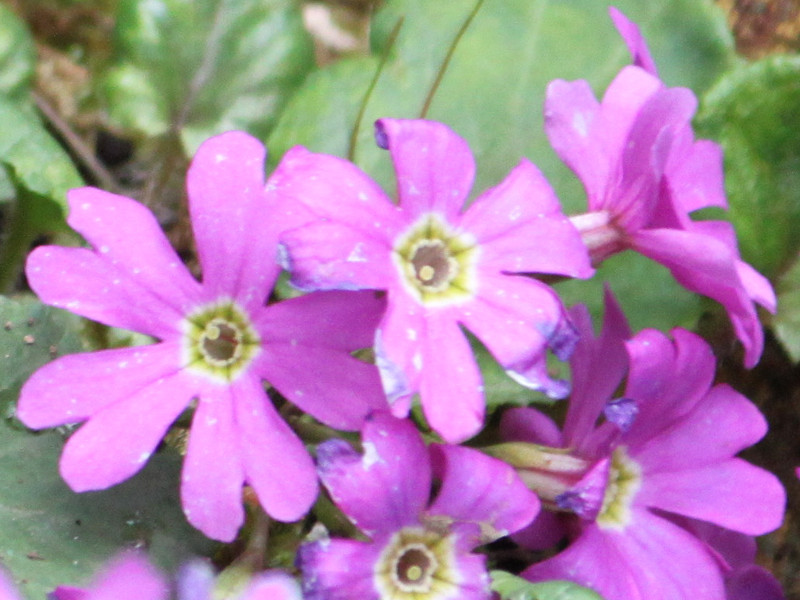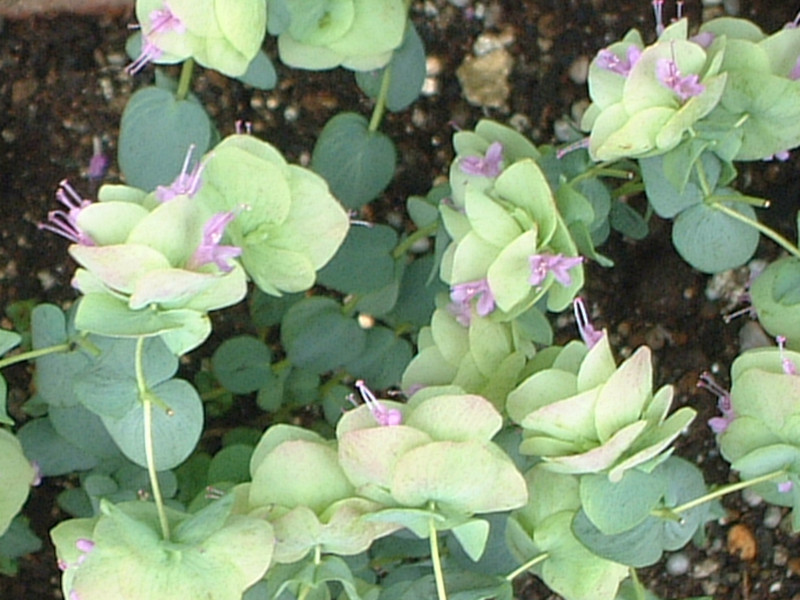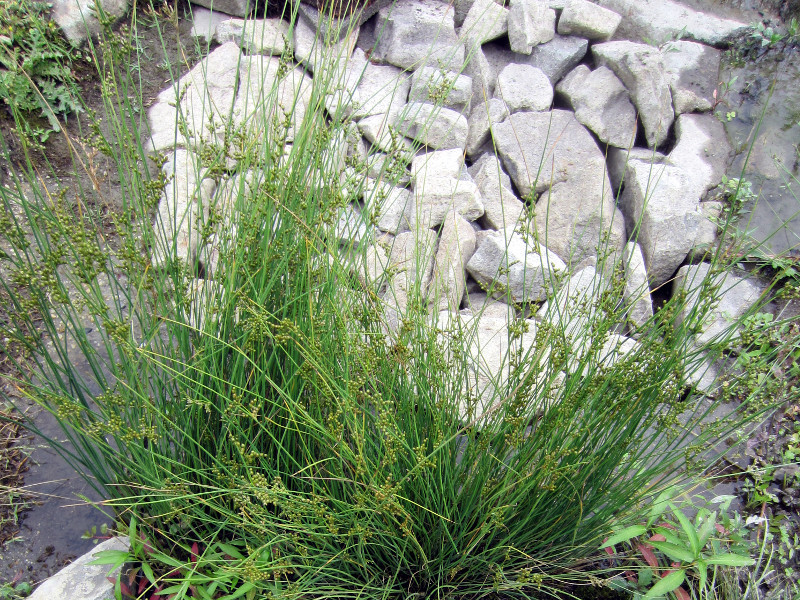Yucca treculeana
- Flower nameYucca treculeana
- Scientific nameYucca treculeana
- Aliasトレクレ糸蘭, Spanish dagger, Trecul yucca
- Place of originthe southern parts of Texas, USA, and northeastern Mexico
- Place of floweringGarden
- Flowering seasonJanuary, February, March, April, December
- Language of flowers"Valor" and "Greatness"
What is Yucca treculeana
Yucca treculeana ,, also known as Spanish dagger or Trecul yucca, is native to the southern parts of Texas, USA, and northeastern Mexico. It belongs to the family Asparagaceae and is an evergreen shrub or succulent. The plant thrives in dry regions. The flower stalks, which emerge from the stem tips, produce elegant inflorescences resembling luxurious feather dusters or cotton candy. It typically grows to a height of 3 to 7 meters. The leaves are bluish-green, radiating from the base, and characterized by thick, rigid, sword-shaped blades with parallel veins. Each leaf ranges from 0.5 to 1.2 meters in length and 5 centimeters in width, featuring serrated margins. From December to April, it develops cone-shaped inflorescences on stalks measuring 50 to 120 centimeters, bearing bell-shaped flowers with a diameter of 5 centimeters and a length of 4 centimeters, in shades ranging from white to creamy white.
After flowering, it forms capsule fruits containing numerous elongated fleshy black seeds, each measuring 6.5 to 10 centimeters in length and 2.5 centimeters in width. The plant reproduces through insect-pollinated flowers, with the yucca moth serving as a pollinator. Yucca treculeana has various uses, including ornamental gardening as well as traditional applications by the Aztecs, who utilized its leaves for snakebite antidotes, clothing, ropes, roofing materials, and everyday items. The aromatic flowers are also used in cooking, similar to pickles and cabbage, while the sap can be employed as a detergent.
★ Name Origin:
The genus name "Yucca" is believed to have been mistakenly given, confusing it with the cassava plant (Manihot esculenta), a source of tapioca. The species epithet "treculeana" is a dedication to the French botanist Auguste Adolphe Luicien Trcul.
★ Floral Language:
"Valor" and "Greatness"
Common Name: Yucca treculeana, Alternative Names: Spanish dagger, Trecul yucca, Native Region: Southern Texas, USA - Northeastern Mexico, Growth Habit: Hardy, Drought-Tolerant, Evergreen Perennial/Succulent/Shrub, Taxonomy: Kingdom Plantae, Subclass Angiosperms, Order Asparagales, Family Asparagaceae, Genus Yucca, Height: 3 - 7 meters, Leaf Color: Bluish-Green, Leaf Arrangement: Radiate, Leaf Texture: Thick and Rigid, Leaf Shape: Sword-shaped, Leaf Veins: Parallel, Leaf Length: 0.5 - 1.2 meters, Leaf Width: 5 centimeters, Leaf Margin: Serrated, Flowering Period: December - April, Inflorescence Shape: Cone-shaped, Flower Stalk Length: 50 - 120 centimeters, Corolla Shape: Bell-shaped, Flower Diameter: 5 centimeters, Flower Length: 4 centimeters, Flower Color: White - Creamy White, Fruit Type: Capsule, Seed Color: Dull Black, Seed Length: 6.5 - 10 centimeters, Seed Width: 2.5 centimeters, Reproduction: Insect-Pollinated Flowers, Pollinator: Yucca Moth, Uses: Ornamental Gardening, Traditional Applications by the Aztecs, Floral Uses: Culinary Purposes, Sap Uses: Detergent.
